A training agenda is a detailed outline that covers the complete schedule of the topics, activities, and the training session timings, including the specific learning objectives. It is a clear-cut roadmap for both the organizers and the participants, ensuring that all session objectives are covered and planned according to the track to achieve the intended outcome. The training agenda sample and example formats generally include the date, allotted time, location, trainers, topics, breaks, and other required information. If you are looking for the best training agenda template, then find the sample training agenda in Word, Excel, PDF, and other formats at Docsi to easily download and edit as per the requirement.
Training Agenda Templates to Download in MS Word, Google Docs
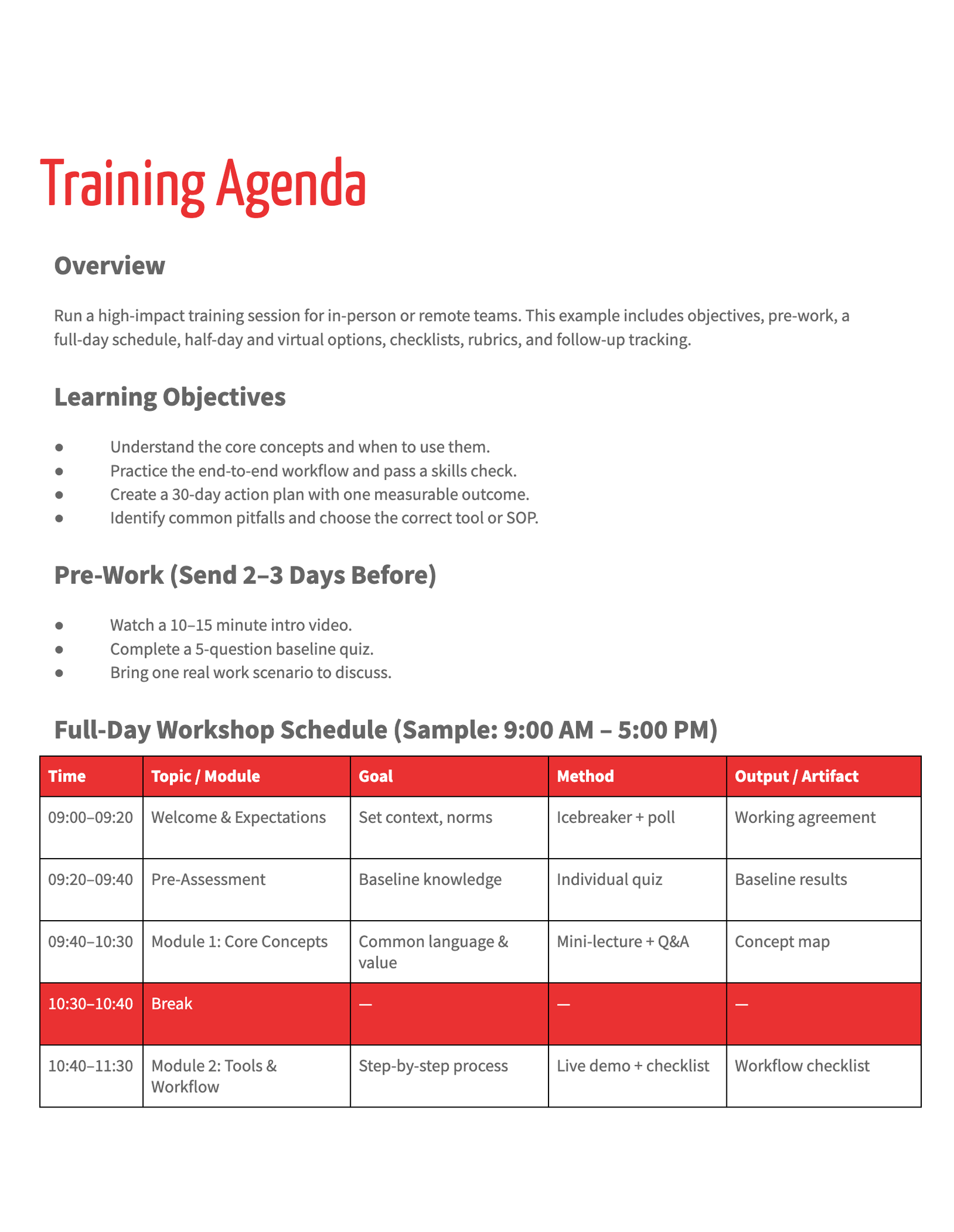
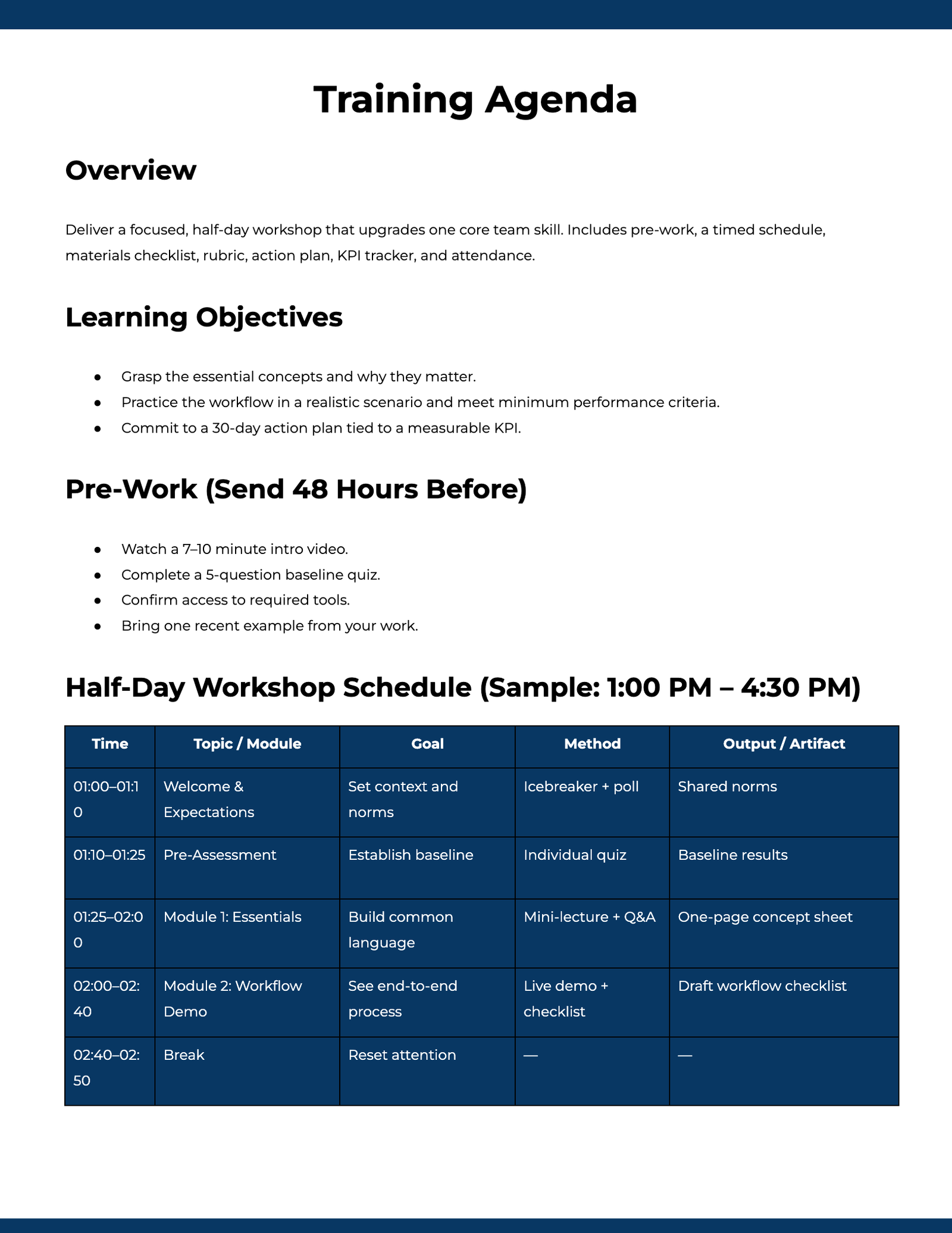
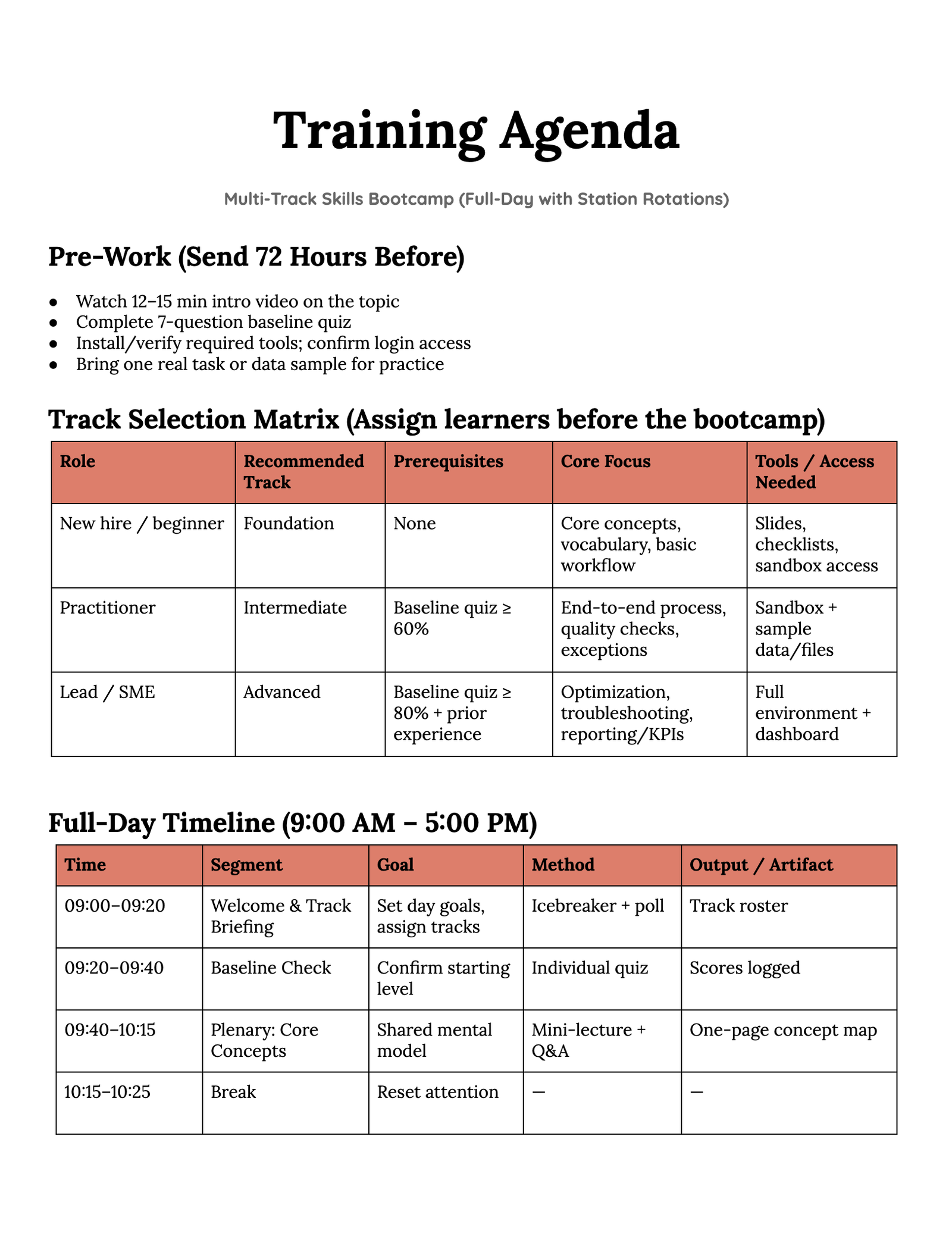
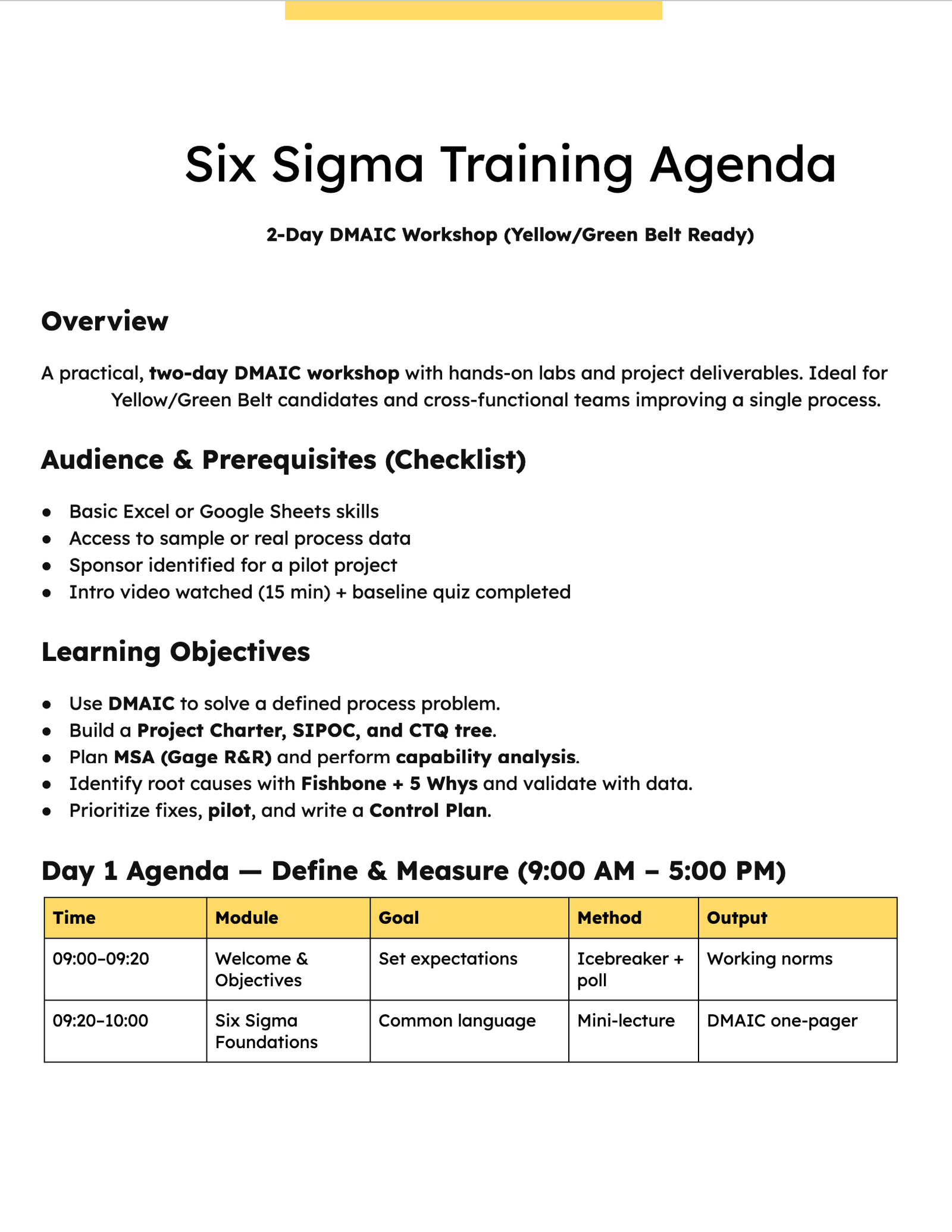

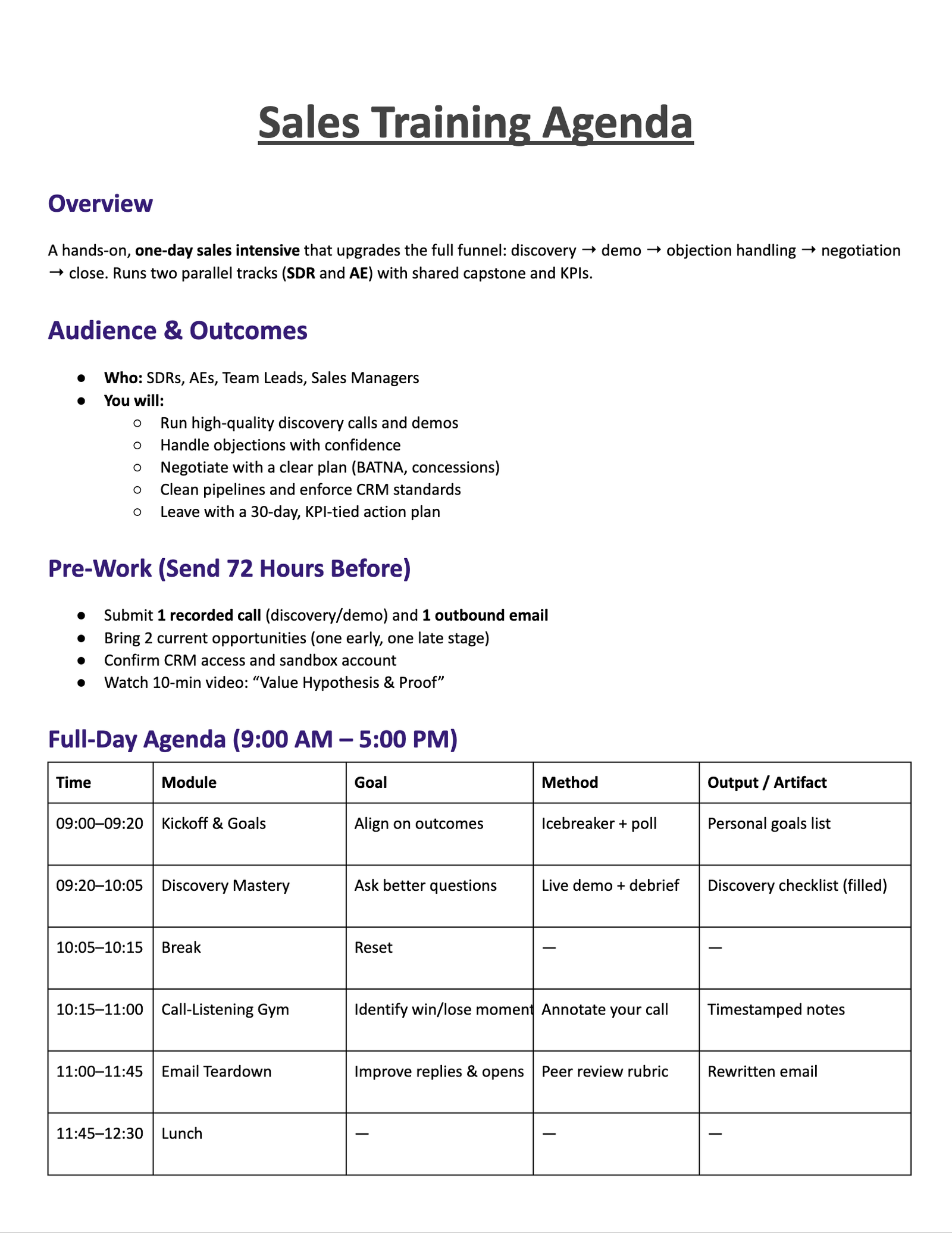
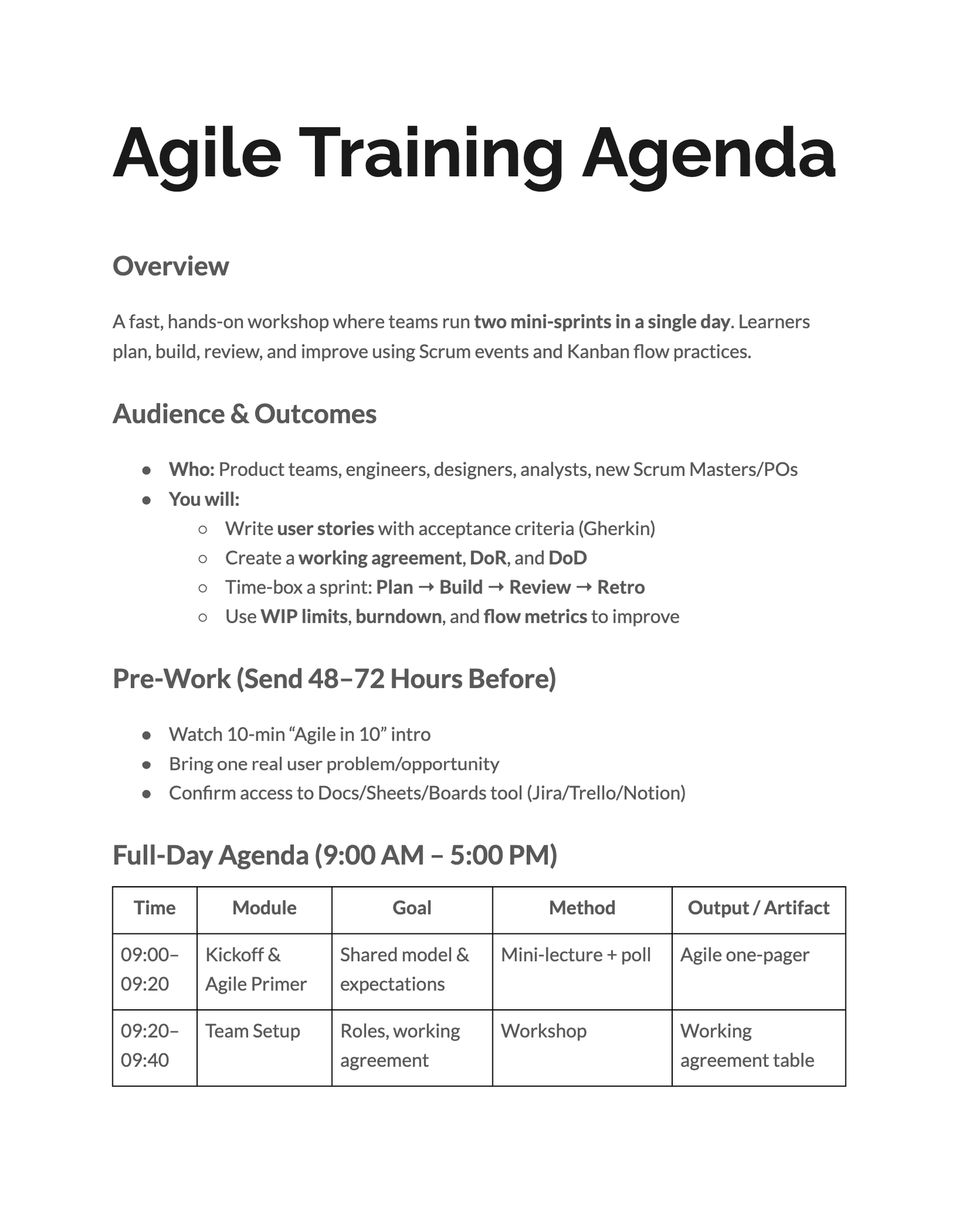

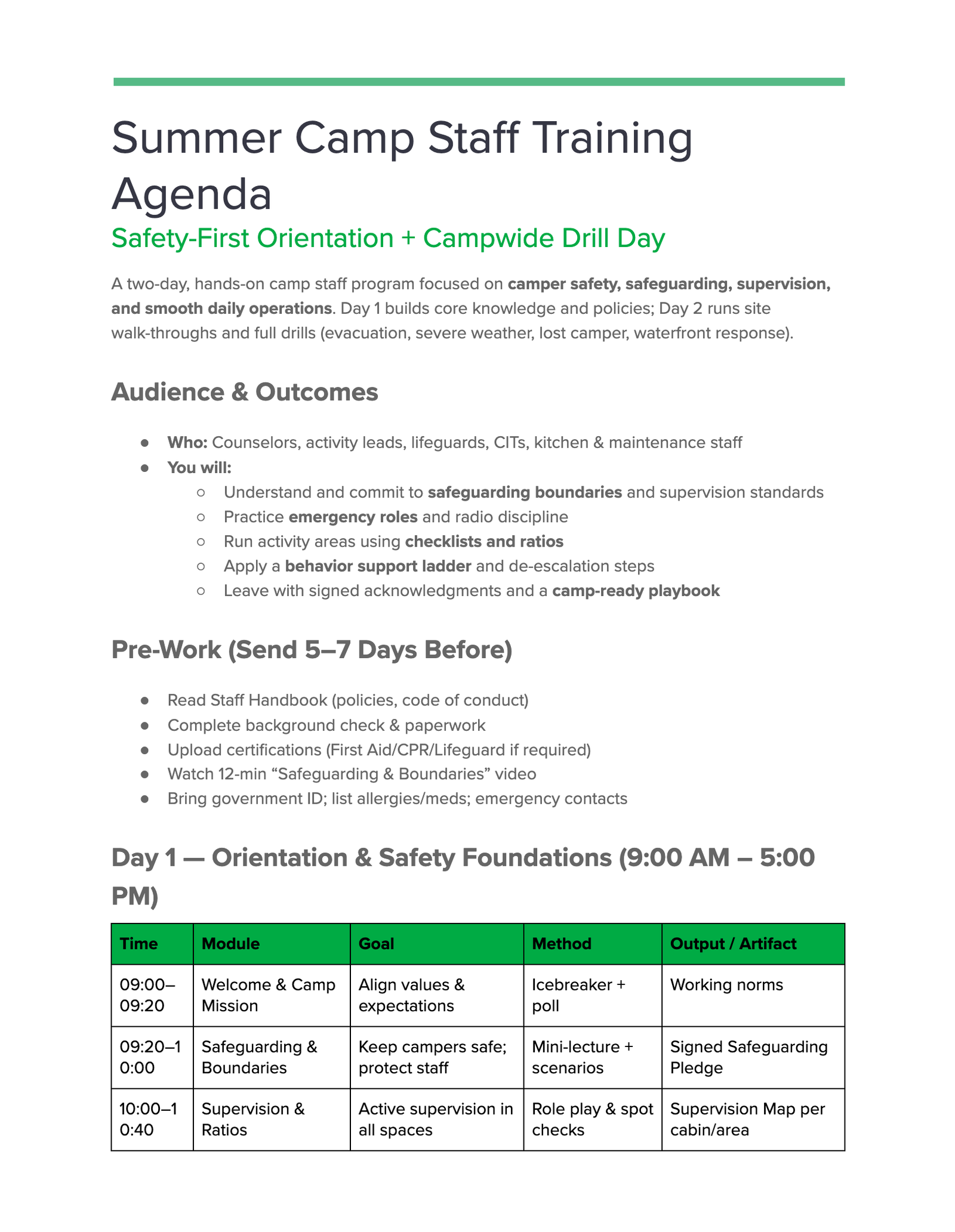
Training Agenda Format
Find the detailed training agenda template step by step so you can clearly understand the basic format of training agenda here:
Step 1: Define the Purpose of the Training
Start it by mentioning the purpose of the training along with the information like what the participants are going to learn out of it.
Example: Training sales representatives on effective customer communication and required product knowledge.
Step 2: Clearly Set the Training Objectives
List out all the learning goals that one is going to achieve through this training programme.
Example:
- Understand key features.
- Practice effectively and sales conversations.
- Learn to handle the questions..
Step 3: Keep the Duration and Schedule Clear
State how long the training will last like full day, half day or any particular hours and accordingly allocate the time for each session.
Example: 9:00 AM – 4:00 PM
Step 4: Mention the Training Methods and Materials
You must clearly mention the methods or the type of material that would be used in this training. For example: presentations, case studies, role plays and materials like slides, handouts, videos, etc.
Example: Role play to build the communication skills and PowerPoint for listing out the features.
Step 5: Assign Trainers
List out the Trainers who are going to handle the sessions.
Example: Session 1 led by John (Sales Manager) and Session 2 led by Maria (Training Specialist for Sales department).
Step 6: Include time frame for Breaks and Q&A session
Do mention a separate session time for the trainees question and answers as this helps them to clarify the doubts.
Example: 15 minutes break in every 90 minutes, plus a 30 minutes Q&A session at the end.
Step 7: Conclude
End the training agenda with a summary and feedback collection.
Example: Evaluation forms are important to know correction required areas and discussion on follow up support.
One Day Training Agenda
Training Title: Effective Customer Communication
Date: November 10, 2025
Location: Conference Room B
Trainer: Maria, Training Specialist
Targeting Audience: New Sales Representatives
| Time | Session | Objective | Trainer | Material |
| 9:00 – 9:30 AM | Introduction | Explain and keep the expectations related to the agenda | Maria | Slides |
| 9:30 – 10:30 AM | Product related Knowledge | Discuss main product features and it’s key benefits | John | Presentation |
| 10:30 – 10:45 AM | Break | |||
| 10:45 – 12:00 PM | Customer Communication | Learn listening and questioning skills | Maria | Role play and discussion |
| 12:00 – 1:00 PM | Lunch | |||
| 1:00 – 2:30 PM | Handling Queries/Objections | Learn and Practice the techniques for managing customer | John | Case Studies |
| 2:30 – 2:45 PM | Break | |||
| 2:45 – 3:30 PM | Turning a Successful Sale | Apply techniques to complete sale | Maria | Exercises |
| 3:30 – 4:00 PM | Feedback | Collect feedback | Maria | Evaluation Forms |
How to Write a Training Agenda?
Plan your training agenda and bring it to life by following the tips given below:
- Keep it short
Before you start writing the agenda, you must have clarity and understand the agenda, which must be understood by everyone. Ensure to write it in a clear and organized way by preparing an outline or writing everything in a table.
- Use a template
There are many platforms like Docsi which provide the predefined format of the training agenda. Choose the best format and customize it for your own needs.
- Write all the important information
Write every detail that people should know just by checking your training agenda template. Even the smallest details can always make a difference.
- Take a second opinion
As the training agenda is not for one person, it is always a good idea to get it proofread by your friends or someone in your circle who can give you the right inputs.
- Review and revise
Check for errors like spelling mistakes and recheck everything to ensure that you have used all the required information correctly and are not missing any details.
What is a training agenda?
A training agenda is a predefined schedule that provides complete information about the training program. It includes the objectives, trainers, evaluation methods, and complete necessary information, saving time and standardizing the approach.
What is the primary purpose of a training agenda?
A training agenda gives a complete roadmap of the session to provide a clear overview, manage the time to stick to the schedule so that all topics are covered, clearly set the expectations, give details about the learning objectives, and increase engagement by clearly mentioning activities, participants, and other details.
What is the difference between a training agenda and a training plan?
A training plan is a more detailed document that includes overall needs, objectives, and evaluation methods, whereas the training agenda is a more specific document that breaks down the day-to-day schedule and activities related to the training.
How do I share the training agenda with participants?
Once you have prepared the training agenda, share it with the participants over email in PDF or Word document format. Ensure to add a calendar invitation so that it can help participants get an easy reminder.
What should be done after the training session?
Once the training session is completed, ensure to gather participant feedback, analyze the results, and based on the feedback collected, try to improve the training session next time.
